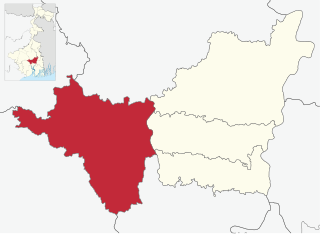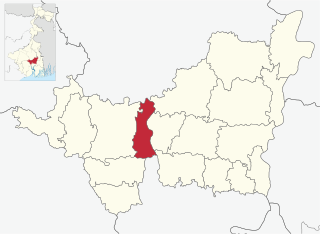Agriculture
This is a rich agricultural area with several cold storages. [15] Though rice is the prime crop of the district, the agricultural economy largely depends on potato, jute, vegetables, and orchard products. Though potato is cultivated in all the blocks of this district Dhaniakhali, Arambagh, Goghat, Pursurah, Haripal, Polba-Dadpur, Tarakeswar, Pandua and Singur contributed much of its production of this district. [16]
Some of the primary and other hats or markets in the Arambgh CD Block are: Benia hat, Batanal market, Dhamsa market, Dangal market, Mayapur hat, Nawpara hat, Purba hat, Dhonda market and Goarhati market. [17]
The Tebhaga movement launched in 1946, in 24 Parganas district, aimed at securing for the share-croppers a better position within the existing land relation structure. Although the subsequent Bargadari Act of 1950 recognised the rights of bargadars to a higher share of crops from the land that they tilled, it was not implemented fully. Large tracts, beyond the prescribed limit of land ceiling, remained with the rich landlords. From 1977 onwards major land reforms took place in West Bengal. Land in excess of land ceiling was acquired and distributed amongst the peasants. [18] Following land reforms land ownership pattern has undergone transformation. In 2013–14, persons engaged in agriculture in Arambagh CD Block could be classified as follows: bargadars 9.06%, patta (document) holders 6.70%, small farmers (possessing land between 1 and 2 hectares) 1.72%, marginal farmers (possessing land up to 1 hectare) 24.77% and agricultural labourers 57.75%. [13]
Arambagh CD Block had 150 fertiliser depots, 39 seed stores and 69 fair price shops in 2013-14. [13]
In 2013–14, Arambagh CD Block produced 2,890 tonnes of Aman paddy, the main winter crop from 1,132 hectares, 40,358 tonnes of Boro paddy (spring crop) from 12,293 hectares, 516 tonnes of Aus paddy (summer crop) from 211 hectares, 2,022 tonnes of jute from 110 hectares and 60,883 tonnes of potatoes from 5,066 hectares. It also produced oilseeds. [13]
In 2013–14, the total area irrigated in Arambagh CD Block was 21,003 hectares, out of which 4,000 hectares were irrigated by canal water, 2,850 hectares by tank water, 2,070 hectares by river lift irrigation, 2,690 hectares by deep tube wells and 9,393 hectares by shallow tube wells. [13]















